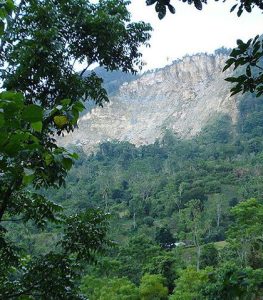More refugees braving deadly Darian Gap
Increasing numbers of people, including a growing number of Venezuelans, are attempting dangerous crossings through the jungles of Central America’s infamous Darien Gap in search of safety, according to a new report.
The report, by the UN agencies UNHCR and IOM, says as that as the socio-economic impacts of the COVID-19 pandemic hit refugees and migrants from Venezuela in host countries across Latin America, an increasing number are heading north, joining other groups of people on the move.
 The report says the total number of people crossing the jungle so far this year has almost tripled compared to the same period last year, going from 2,928 in the first two months of 2021 to 8,456 in the same period of 2022, including 1,367 girls, boys and adolescents.
The report says the total number of people crossing the jungle so far this year has almost tripled compared to the same period last year, going from 2,928 in the first two months of 2021 to 8,456 in the same period of 2022, including 1,367 girls, boys and adolescents.
The Darien Gap, which marks the border between Colombia and Panama, is one of the world’s most dangerous refugee and migrant routes, consisting of 5,000 square-kilometres of tropical wilderness, steep mountains, and rivers.
Crossings can take ten days or more for the most vulnerable, who are exposed to natural hazards as well as criminal gangs known for perpetrating violence, including sexual abuse and robbery.
“Many of those who make the crossing – usually young adults and families – arrive in remote indigenous communities, hungry, dehydrated, exhausted and in need of medical attention,” the report says.
“UNHCR and IOM recognise the Government of Panama’s positive efforts to provide assistance and reiterate their commitment to help the authorities ensure access to aid and protection for all those in need, including host communities,” it says.
The report says many of those who make the crossing – usually young adults and families – arrive in remote indigenous communities, hungry, dehydrated, exhausted and in need of medical attention.
While many of the Venezuelans traversing this dangerous route had previously been living in other host countries in South America, an increasing number are now leaving directly from Venezuela, it says.
“Refugees and migrants of various nationalities have been crossing the Darien Gap for years. However, 2021 marked a record in the number of people who risked their lives through the dense jungle separating South and Central America,” the report says.
“Some 133,000 people made the journey last year, the large majority of whom were Haitians, including their children born in Chile and Brazil, followed by Cubans, Venezuelans, and people as far away as Angola, Bangladesh, Ghana, Uzbekistan and Senegal. In 2021 alone, at least 51 people were reported missing or dead,” it says.
In response to the growing number of people crossing the Darien Gap, IOM, UNHCR and partners are stepping up the response in Panama, providing temporary shelters at government-run reception centres, as well as mattresses, blankets, solar lamps and hygiene kits, among other material assistance for both people on the move and local communities.
There are now more than six million refugees and migrants from Venezuela around the world. The vast majority – nearly five million – are in in Latin America and the Caribbean.
The Regional Interagency Coordination Platform for refugees and migrants from Venezuela (R4V) launched a US$1.79 billion regional plan for 2022 to support the increasing needs of refugees and migrants from Venezuela and their host communities across 17 countries in the region.












